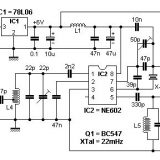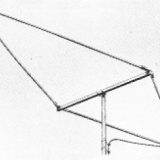Drake R8. Review of Shortwave Receivers
The Drake R8 series of shortwave receivers were introduced in 1991 until 2005 or thereabouts as R8, R8A, R8B and R8E. The latter being a version of the R8. Each of these different versions had a successively improved specifications and user interface.
The receiver was intended for the discerning listener or radio amateur, which I am not.
Bear in mind that radio amateurs generally prefer transceivers and you will begin to understand that this radio has a specialised following. Frequency coverage is 100kHz to 30MHz. Tuning is continuous, so there are no apparent waveband ranges.
Semiconductors: A very large number
Main Controls
- Tuning (In 10 Hz increments)
- Volume (AF GAin)
- Tone
- RF Gain
- Attenuator/ Preselector
- Selectivity 500Hz to 6kHz
- Mode: USB, LSB, RTTY, CW AM, FM
- AM synchronous detection
- Notch Filter
- Noise Blanker
- Squelch
- Passband Offset
- Dual VFO tuning
- Numeric/Function Keypad
‘S’ Meter
Back lit LCD Display
Various memory and scan modes. Some models allow alpha data entry of station names
Clock and timer for two time zones
Description
The original Drake R8 was a little complicated to use because each key had a number of different assignments. Succesive models addressed this problem by providing more keys and the ability to name stations, rather than having to remember that the BBC is at memory location 7 (say) and having to look it up in a book. Even the diminutive Sony SW100 lets you type in the station names.
The receiver is a double superhetrodyne with a first IF of 45MHz and a second IF of 50kHz. The frequency synthesizer is a phase-lock loop type with multiple nested loops. Controls all opeate via an internal microprocessor. This represents a refinement of the principle used in the Kenwood R1000 and SONY radios. Later radios by other manufacturers use direct digital synthesis, and I was surprised to find that this set still uses a PLL.
The radio uses multiple front-end filters covering small segments of the shortwave band. These are switched in and out using p-i-n diodes. This might be criticised by some users, because the diodes can act as mixers in the presence of strong signals leading to cross-modulation. These diodes would degrade the front-end dynamic range. (The receiver front-end would be the RF stage, if any, and the mixer.) Let me explain a little. Suppose you are trying to receive a weak station, such as “567 Cape Talk” in Johannesburg. Nearby, there is (or was) a local station on 576kHz.
What can happen is that the receiver front end overloads, and 576 modulates Cape Talk either completely, or mixes the sound together giving a form of “monkey chatter”. In really bad cases, all you can hear is the content of one station all over the band. To a point, valves were less susceptible to this problem. Radio design of the 1990’s encouraged the problem by having little or no front-end selectivity. Other radios used reed relays to switch the front end filters in and out. In spite of this, the Drake R8 is considered to perform well in this respect and was the receiver of choice for medium wave DX.
Selectivity is set by means of inductively tuned filters, rather than crystal or mechanical filters.
There is a DB-9 RS-232 connector at the rear of the set, so you can control it via a computer. I don’t kow of any program that works with it – maybe “Ham Radio De Luxe” ?
The set is quite large and heavy for a solid-state radio-but then no heavier than the Barlow Wadley. It is housed in a smart looking sturdy cabinet. Alas the plastic feet are really not up to the job and I guarantee you will break them. Never mind, they are easily repaired with superglue. The Kenwood cabinet and feet are quite a lot stronger.
Use a radio like this with some caution in a country where the 230 volt mains can rise above 300 volts and stay there for hours on end, and where violent thunderstoms and Winter static can put several hundred volts on the antenna.
Review
Here we have a really good receiver capable of resolving very weak signals in the presence of nearby powerful stations.It has exceptional sensitivity – much better than most radios, but it simply can’t be “taken advantage of” in the modern setting. Maybe you could take the set out to the middle of nowhere with some sort of high gain portable antenna and you would be impressed with the DX received. Here in the middle of Randburg there is too much background noise. From about 14MHz and up, the roar abates and stations can be heard.
The set works well on SSB and there is a passband offset control, which assists in removing adjacent channel interference and making the audio more intelligible.
The set has two “VFO” positions – meaning you can tune two stations at once and switch from one to the other.
On AM the synchronous detector works well when you have selective fading and makes the signal stand out against the background noise and reduces the distortion from selective fading.
I haven’t tried this set in RTTY (Teletype) mode. For Morse code enthusiasts I can only imagine that the 500kHz CW bandwidth might be a bit broad.
When in stand-by, the set draws 24 Watts of AC power – about the same as the Kenwood R1000 in operational mode! This is definitely not politically correct.
There have been comments, particularly about the first R8s, that they were too complicated to use. I can’t say I agree. I found the SONY SW100 required much more learning. The R8 at least has a tuning knob.
The notch filter is quite effective at removing annoying heterodynes (Whistles) from adjacent interfering stations. It works at audio frequency rather than at I.F. Some modern receivers use digital signal processing to remove heterodynes and ar better at tracking unsteady signals.
Receiver selectivity is by default selected according to mode. The maximum selectivity is 6kHz. This is too narrow for enjoying music on the medium wave band, otherwise audio quality is good. The user can override the default settings.
RL Drake are still in existence, but do not make SWL/Amateur radio receivers any more. Apparently they will still service these sets, but I don’t know anyone in South Africa that does so. I certainly can’t.
The set scores maybe a 9.5 out of 10 on some sort of scale devised by serious listeners, but if you want a set for news, music and the odd religious station on shortwave, I don’t think it would be right.
Other radios to consider might be the iCOM R75, Grundig/Eton Satellit 750 (The predecessor 800 was designed by RL Drake) and the Drake R7.




















Nice. So whats the Difference in the A,B and E models ? Is it on the serial number ? Thanks